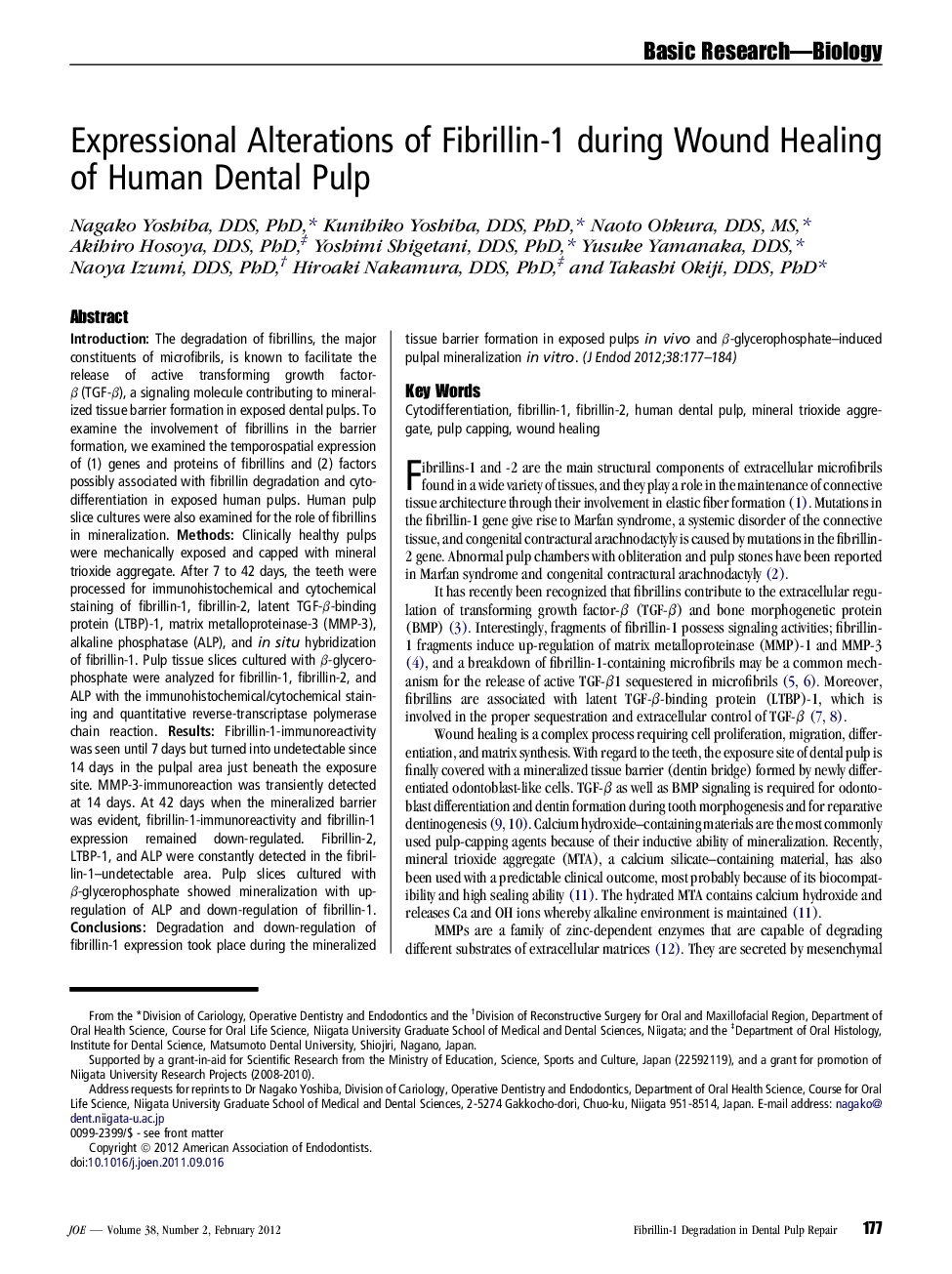| Article ID | Journal | Published Year | Pages | File Type |
|---|---|---|---|---|
| 3149051 | Journal of Endodontics | 2012 | 8 Pages |
IntroductionThe degradation of fibrillins, the major constituents of microfibrils, is known to facilitate the release of active transforming growth factor-β (TGF-β), a signaling molecule contributing to mineralized tissue barrier formation in exposed dental pulps. To examine the involvement of fibrillins in the barrier formation, we examined the temporospatial expression of (1) genes and proteins of fibrillins and (2) factors possibly associated with fibrillin degradation and cytodifferentiation in exposed human pulps. Human pulp slice cultures were also examined for the role of fibrillins in mineralization.MethodsClinically healthy pulps were mechanically exposed and capped with mineral trioxide aggregate. After 7 to 42 days, the teeth were processed for immunohistochemical and cytochemical staining of fibrillin-1, fibrillin-2, latent TGF-β-binding protein (LTBP)-1, matrix metalloproteinase-3 (MMP-3), alkaline phosphatase (ALP), and in situ hybridization of fibrillin-1. Pulp tissue slices cultured with β-glycerophosphate were analyzed for fibrillin-1, fibrillin-2, and ALP with the immunohistochemical/cytochemical staining and quantitative reverse-transcriptase polymerase chain reaction.ResultsFibrillin-1-immunoreactivity was seen until 7 days but turned into undetectable since 14 days in the pulpal area just beneath the exposure site. MMP-3-immunoreaction was transiently detected at 14 days. At 42 days when the mineralized barrier was evident, fibrillin-1-immunoreactivity and fibrillin-1 expression remained down-regulated. Fibrillin-2, LTBP-1, and ALP were constantly detected in the fibrillin-1–undetectable area. Pulp slices cultured with β-glycerophosphate showed mineralization with up-regulation of ALP and down-regulation of fibrillin-1.ConclusionsDegradation and down-regulation of fibrillin-1 expression took place during the mineralized tissue barrier formation in exposed pulps in vivo and β-glycerophosphate–induced pulpal mineralization in vitro.
